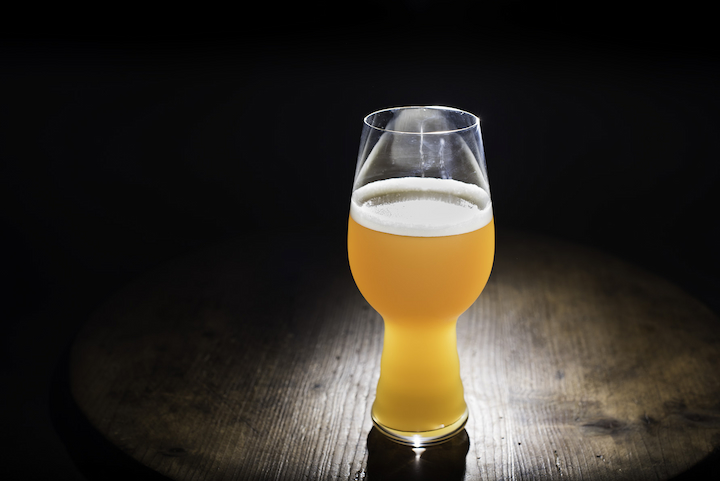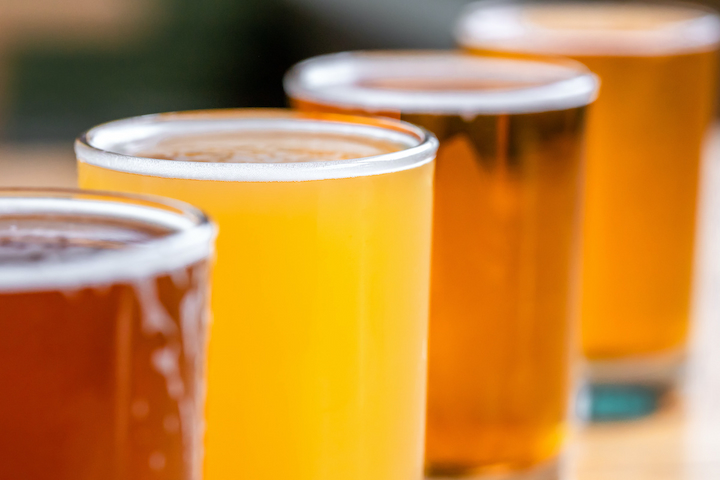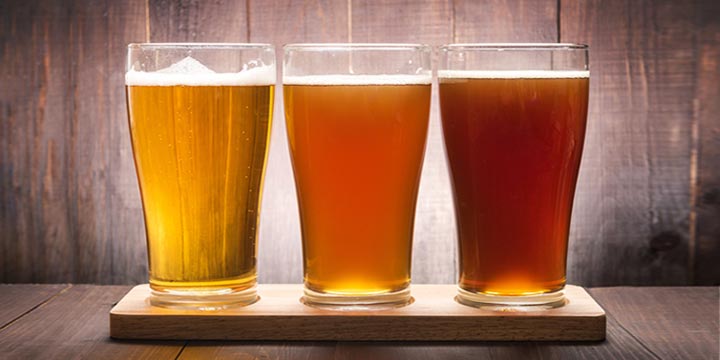A Guide to IPA Beer: Meaning, History and Types
An IPA is a hoppy beer that falls under the Pale Ale category and typically has a higher ABV than other pale ales. However, not all IPAs are created equal, which can perplex this category even for self-proclaimed beer connoisseurs.
What is the meaning of the IPA and what is its origin story?

IPA is an abbreviation for India Pale Ale and contrary to popular belief, this category originated in England and not India. Legend has it that the beer was brewed with enough hops to last the long journey from England to India.
There are a few different theories about the origins of this tasty craft beer, but this is the most widely accepted narrative. Since then, the style has been analysed and nowadays branched out into numerous sub-styles of IPA beers available online and worth tasting.
What is the distinction between a pale ale and an IPA?

A Pale Ale is always classified as an IPA, but an IPA is not always classified as a Pale Ale. A pale ale is a beer made primarily of pale malts. It has a mild body and a well-balanced flavour profile. Pale Ales are classified into several types, including English Pale Ales, Blonde Ales, American Ales, and India Pale Ales (IPAs). An IPA, a pale ale style, can be further subdivided into the sub-styles listed further below in the blog post.
What is the alcohol content of the typical IPA?
IPAs are renowned for providing a higher alcohol level than most other beer styles. The typical ABV or IPA alcohol content is 6%. However, some sub-styles may be relatively low (for example, Session IPAs) and others may be significantly high (such as Imperial IPAs).
Strength levels:
Session – ABV: 3.0 – 5.0%
Standard – ABV: 5.0 – 7.5%
Double – ABV: 7.5 – 10.0%
Sub-Styles of IPA

Double Hopped
A double IPA is a beverage made with extra hops and malt. The additional hop layering increases bitterness, while the extra malt provides a more distinct toasted or caramel malt flavour. More malt means more sugar for the yeast to convert to alcohol, resulting in a stronger brew that many describe as hazy, juicy, or fruity. These are just a few of the words used to describe IPAs, but what distinguishes one from the next? Here are a few sub-styles you might encounter at your local brew pub or taproom.
American
An American ale, according to the BJCP, is “a strikingly hoppy and bitter, fairly strong American pale ale showcasing modern American or New World hop varieties.” The balance is hop-forward, with a smooth fermentation profile, a relatively dry finish, and clean, supporting malt that allows a diverse range of hop character to shine through.” This IPA beer style is usually made with American ingredients and can range in colour from medium gold to light amber.
English
The English IPA is not the same as the American IPA. This craft beer is still notably flavourful, but the English hops and yeast transform it, imparting floral and earthy hop notes as well as a distinct fruity character from the yeast. An English IPA’s flavour profile is typically smoother and more rounded than its American counterpart.
West Coast
While not technically an IPA style, West Coast IPA beers are notorious for being extremely bitter and having a higher ABV than standard IPAs. The malt flavour is almost unnoticeable in this style, and the hops are the main focus of this dry-finishing craft beer.
Hazy/NEIPA
The NEIPA, also known as an East Coast IPA or a hazy IPA, is one of the most recent Specialty styles of IPA beers to be added to the BJCP. This style began as a fad brew in 2015, but it appears to be here to stay. Because hops are not the main focus of the NEIPA, it is more sophisticated than the West Coast IPA.
The New England IPA pours cloudy or hazy and emphasises juicy, citrusy flavours while avoiding some of the bitterness found in traditional IPAs. While some beer geeks may argue that this beer should not be classified as an IPA, there is no denying that it is an excellent gateway IPA for those who want to acquire a taste for hoppier beers.
Belgian
Belgian is a catch-all term for a variety of beer styles that usually implies the use of Belgian yeast. It could simply be a Belgian ale strain, which can give a beer a spicy, stone fruit edge, similar to Belgian blonde ales. It could also indicate the use of Brettanomyces, which, depending on when it was added, could actually create pithy orange zest, juicy citrous, or a farmyard-like funk.
Grapefruit
This seasonal beer has grown so popular and widespread that we believe it now warrants its own category. While some may consider it unethical to obtain the aroma and taste from grapefruit rather than hops, they might be missing the point.
In addition to a gorgeous grapefruit earthiness, the fruit adds a sour acidity to the beer. When done properly, it produces a clean, bitter, and extremely fruity beer that can be enjoyed even by those who do not normally enjoy beer. Fruit IPAs may become more popular as big “C” hops become more difficult to obtain.







